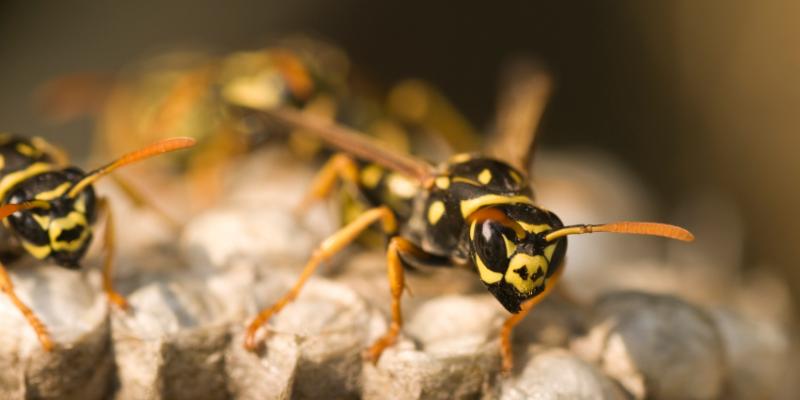
Now, I know you are thinking the lead singer/bass player from the 80’s rock group The Police! Although their tour this last year did pack a punch on the ol’ wallet if you went, …I was talking more on the lines of it being Yellow Jacket season!!!
Its been great BBQ and picnic weather lately here in the greater north west! Perfect for outdoor concerts, mountain biking, swimming and many more of those fun outdoor activities we do up here and nothing could ruin a great day with friends and family faster than a sweet little bee sting! (Or flipping your bike upside down..you know who you are)
Yellow jackets and miscellaneous wasp calls have been on the rise this last week or so. So in honor of our poky little friends, we are giving you some ideas on keeping your family and home/yard area “sting” free!
Wasps, such as yellow jackets, do serve a useful purpose. They aid in the pollination of flowers and eat small insects around our property. For most of us, however, the bad outweighs the good. Yellow jackets, are black and yellow striped, and have long abdomens. Yellow jackets love sweets and meat. For this reason, you’ll see them hovering around picnic tables and garbage cans, making people nervous about approaching these areas. They’re also quick to sting and don’t always need a reason. Yellow jackets are social insects. Hundreds of these insects can live in one nest. If the yellow jacket feels threatened it will aggressively defend its nest and call in reinforcements to help. Unlike the bee, yellow jackets don’t die after stinging and will sting repeatedly if they feel threatened.
OOOOUCH!!!
- In the beginning of the season, have your pest technician treat bushes and plants with an environmentally safe pesticide. This will cut off the yellow jacket’s food supply forcing them to look for a more profitable bit of property in which to do their hunting.
- Keep trash cans tightly covered. Yellow jackets are attracted to food smells.
- Throw away empty food and beverage containers and don’t leave used paper plates and cups lying around.
- Keep barbecue and picnic food covered.
- Try not to wear perfume, hairspray or any other sweet scent that can attract yellow jackets to your property. Smelling “like a flower” may not be the best idea in all social gatherings. 🙂
If you want to rid your area of these pests, you must first locate the nest. If you’re not sure where the nest is located, try and observe the yellow jackets from a safe distance. These wasps usually build their nest in crevices in porches and decks or in the ground. For your own safety, don’t approach the nest. Leave that to trained professionals with adequate protective gear. Think of Sting’s song…”Don’t stand so, Don’t stand so close to me!”
When facing a large army of yellow jackets, it’s best not to take any chances.
Don’t pour gasoline or other chemicals into underground nests. This is dangerous, illegal and not very smart. If the nest is in the cracks of your walls, don’t use caulk or foam (or anything else) to seal the crack. Yellow jackets can gnaw their way through sheet rock, wood and many other substances and may find their way into your home. It’s best to at least keep them on the outside of the house where they present less of a threat. If you have yellow jackets in the walls of your home, call an exterminator.
With the exception of some queens, the yellow jackets will die off once the weather gets chilly. They almost never reuse their nests. Don’t let a few yellow jackets force you to spend summer time indoors. Following a few precautions can discourage these backyard pests from paying your family a visit. Wouldn’t you rather enjoy the warm weather outdoors?
If you need professional assistance or have additional questions about yellow jackets or other stinging insects, please feel free to call our office for a free quote for wasp removal at 360-218-2463.